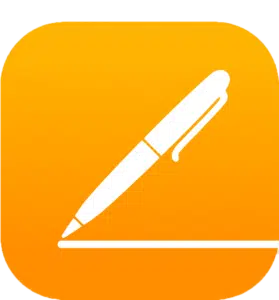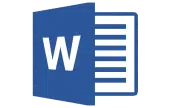Are you having trouble making the perfect resume to show your job qualifications?
Many applicants like you have performance anxiety regarding job applications, beginning with their resumes.
Fortunately, once you better understand the document’s purpose and what to include in it, making one is easier.
What is a resume? Here, we’ll answer that question, giving further guidance about the different types and what to put on them. You’ll also learn what not to put on your resume and more.
What is a Resume?
A resume is a cumulative document of your education, skills, experience, and other employable traits. Think of it as a paper representation of what you studied and what you can do.
While some resumes begin from the applicant’s time in high school, most describe the jobs and education they have had since college.
You can create a resume from scratch or with the help of online programs. Using a resume builder is easiest, but an original one is more likely to stand out.
What is the Purpose of a Resume?
The point of a resume is to show your abilities and experience to potential employers.
People create them to apply for jobs, internships, universities, or other opportunities. They want to know where you have worked and what types of expertise you have.
Since it is a physical document, a resume is also a test of an applicant’s ability to gather and organize information. The readability, design, and appropriateness directly communicate your technical skill to a company.
What is the Difference Between a Resume and a CV?
A resume is a brief, condensed version of a curriculum vitae (CV).
A CV contains the entirety of your educational and technical experience. It is an extensive document detailing an applicant’s accomplishments, publications, and more.
In contrast, a resume only contains information relevant to the job at hand and is much shorter.
Resume usage is broader, but CVs are typically only for higher education, law, or technical business opportunities.
Types of Resumes
Resumes differ based on their purpose. You’ll notice changes between resumes for jobs, internships, and educational goals. Interviewers don’t spend a long time looking at the document, so you must make a quick, strong impression. That’s why applicants pick only the most relevant information to display.
Resumes for a Job
Job resumes are the most common type, and almost every application requires one. The most critical information on this kind is your education level and work experience.
Resumes for jobs have these criteria towards the top where the reader will notice them. Less relevant info like skills and volunteer experience are usually at the bottom.
Interviewers want to assess your job loyalty. They reference the employment dates on your resume to determine if you have long-term potential. Many job resumes also include prior employers’ contact information so interested parties can inquire about you. Similarly, they usually include the document owner’s email or phone number for follow-ups.
Maintaining professional dress and countenance is critical at many workplaces. More than other types, job resumes often include a headshot of the applicant. It isn’t a necessary feature, but it makes a resume more memorable.
Resumes for Internships
Although they are one of the less common types of resume, internship applications often require one. However, on this type, it’s understood that many applicants won’t have much job experience.
As a result, reviewers tend to focus on your education and skills, although any prior experience may bolster your application.
Like with job resumes, you should place your contact information at the top of the document. Consider adding a summary statement, which makes the content of your resume more skimmable for any readers.
Since internships are more accessible, they often have more applicants. The primary factor any internship resume should focus on is scannability. A brief, informational impression with easy-to-find contact info for follow-ups is best.
Resumes for College & Other Educational Programs
For this type, the resume objective is to enroll in a college, graduate school, or other educational program. As a result, your work experience is less relevant.
Colleges want to know about your prior performance in school, including your GPA, academic awards, and outstanding achievements. Your community involvement and volunteer work may also stand out.
Educational resumes don’t often require you to list your contact information or include a headshot. If they want a follow-up interview, they will call or email through official means.
More than other types, attaching a transcript is critical to educational resumes to verify your grades. Colleges and graduate schools often want letters of recommendation attached.
Unlike for jobs and internships, a resume plays a supporting role in the documentation for a college application. It should still show who you are in a readable, informative way, but it usually bears less weight than your other documents.
Example of a Resume
Below you’ll find an example resume that hits the mark. It contains the necessary information in a skimmable, aesthetic format with proper emphasis.
It also has a clear objective and contact information in case the reviewer wants a follow-up interview or email.
What To Put on a Resume
What criteria fit on a resume, and what information should you not include?
For many people, the specifics are unclear, but every type should have five categories: an objective, experience, skills, accreditations, and contact info. Any proper resume outline should have each of these with as much relevant information as possible.
1. Resume Objective
Jobs, colleges, and internships are constantly in flux. Positions open and close, and there are many ways to ask for support or make requests. That is why it is critical to establish an original objective on your resume. It is a direct way to show the reviewer why you submitted the document and what you hope to achieve.
For instance, a resume objective is how you request a follow-up email or interview if you desire one from the company. You may acknowledge that a company isn’t presently hiring, but that you are interested in future opportunities. If your resume is for an internship, mention it to avoid confusion.
2. Work and Project Experience
Your resume should list as much relevant work and project experience as possible. However, experience unrelated to the opportunity at hand doesn’t belong on your resume. For instance, you shouldn’t list volunteering at a soup kitchen when applying for a computer science career.
Job loyalty is critical for any reviewer to assess, so show the corresponding dates with your work experience. Typically, resumes list experience in reverse chronological order, starting with the most recent opportunity.
In many cases, project experience holds comparable weight to past job opportunities. Collaboration is a skill many workplaces seek, and relevant projects are a great way to display it. However, solo projects on a small scale may not prove as interesting.
3. Skills
You shouldn’t overlook skills on your resume. Colleges and companies want diverse employees who can handle multiple obligations. The more varied your skillset, the more of an asset you are in the workplace. Like the other criteria, remember to keep your skills section relevant. However, general-purpose talents like knowing multiple languages are always welcome.
In tech opportunities, skills like programming languages and software familiarity play a critical role. Computer fluency is necessary virtually everywhere, so don’t neglect to mention your software familiarity on your resume.
4. Accreditations & Awards
Colleges show great interest in your awards and accreditations. Academic excellence or sports prowess, for example, may influence the chance of scholarships or enrollment. However, these may not be as relevant for job resumes unless you earn a nationally-recognized award like the Nobel Prize.
Letters of recommendation function like awards. While they may not fit in a small section of your resume, you should attach relevant recommendations to the document if possible.
5. Contact Info
The above sections are useless if the company or school in question cannot contact you. You should always place your contact information at the top of the document. Use both phone and email when submitting a job application.
If you’re posting your resume online for a platform like LinkedIn do not list your contact information. Instead, you can write “further contact information available upon request” to protect your privacy. Relevant parties will message you if they want to schedule a follow-up.
What Not To Include on a Resume
Keep your resume relevant. Irrelevant experience, awards, and skills will take up room on the document.
Do not put your social media handles on your resume unless it is relevant to the job at hand. For instance, professional photographers may want to show their Instagram handle for displaying their work.
Finally, do not use a general resume. Update the document for every new opportunity, selecting relevant qualities. Doing so shows effort and intent while also increasing your chances of a response.
How Long Should a Resume Be?
The length of a resume should be one or two pages. If you can fit every relevant detail onto one page, do so.
Reviewers don’t spend long looking at resumes, so the first page bears the most responsibility for making an impression.
Frequently Asked Questions
Let’s wrap up with some frequently asked questions about resumes.
What is the difference between a US resume and an international resume?
US resumes have fewer categories than international ones. Both have a summary, contact info, education, and work experience. However, a US resume puts experience towards the top, whereas it sits near the bottom in international models.
In addition, international resumes include a “declaration,” certifying that the document’s contents are true.
What is a resume letter?
Also called a cover letter, a resume letter is similar to a summary of the document. It introduces the writer, shows their experience, and defines their intent.
Every resume submission should come with a unique cover letter. It makes an impression and condenses the document’s info for reviewers short on time.
Wrapping Up
A resume is how you assert your qualifications for a future college, internship, or employment opportunity. Every application is an opportunity, and having a relevant, skimmable, and organized resume will help you make the most of them. One or two pages of your most notable experiences, skills, and awards will show your best self to each reviewer.
If you have questions, please feel free to comment below.








